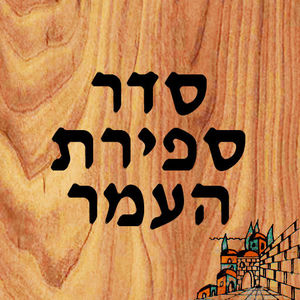 During Sefirat Haomer, most Siddurim include prayer and hints,
During Sefirat Haomer, most Siddurim include prayer and hints,
containing mystical elements, belonging to the language of the Zohar.
The 49 days of the countdown are divided into 7 weeks. Each week is attributed to one of the Sefirot 7, and each day is one of the 7 Sefirot particular to this week’s Sefira general.
These 7 Sefirot are:
⁃ Hesed: Love
⁃ Gevura: Courage
⁃ Tiferet: Harmony
⁃ Netzah: Triumph
⁃ Hod: Gratitude
⁃ Yesod: Foundation
⁃ Malchut: Royalty
The first week, that of Love, is composed of 7 days that are Love of Love, Courage of Love, Harmony of Love…
The second week, Courage, is composed of 7 days that are Courage Love, Courage Courage, Courage Harmony …
Thus one completes the 49 days that separate Pesah from Shavuot.
The idea behind this inclusion of the Sefirot is that each person, each individual soul, is part of a spiritual tree that expresses and must be modeled on the Divine attributes.
The goal of Sefirat haOmer is to follow our progress from an individual, narcissistic and closed level to itself, here compared to slavery, towards an increasingly inclusive level, which begins with the liberation of the Exodus.
In the end, we must reach Shavuot united. We become “One”, no longer in the single and isolated sense, but unified in one whole. Our individuality is broader, broader and more mature.
This is signified in the verse that says, “And Israel encamped in front of the Mountain,” on which the sages say, “As one man with one heart.”
This inclusivity is an essential notion.
She explains the question as well as the answer, in the famous dialogue between Hillel and the one who wanted to convert.
This one asked Hillel to explain to him all the Torah the moment to hold on one foot.
Hillel gave him the proverbial answer, “What is hateful for you, do not do it to your neighbor, the rest is commentary, go, learn.”
We can understand this in the light of an introduction.
According to the Talmud Sages, the human body is made of 248 organs and 365 nerves to correspond to the 248 positive commandments and the negative 365 commandments of the Torah.
An individual can not observe them all, because some are reserved for the Cohanim, others for the Levi, others for the women, etc.
The person who converts, being neither Cohen nor Levi, and not even enjoying the commandement of how to judge his inheritance (since he does not enter the community by parentage) is therefore a leg in relation to everything the body.
So the question is, how can we benefit from all the Mitzvot if there are some we can not do. Hillel’s answer takes negative precepts as a principle of inclusion.
Hillel means that not only are all included in particular positive precepts, but even the commandments that are performed by restraint are shared.
Just by not hurting others, we will include them in the good things we do.
So all are considered included in the Mitzvot that the Cohanim or Levi do, and so men and women are included with each other with the Mitzvot they do and that others can not do.
At Shavuot we read the Ten Commandments which are expressed to the second person singular, or G-d speaks to Israel as one person. This means that the Torah must be lived in inclusivity. Each person counts, with all its individual peculiarity, to achieve this unity.
It is not a question of uniformity, on the contrary we must be part of all and recognize ourselves in all as we are, and each must exist as such in ourselves.
Shavuot means Weeks. The 49 stations of the Unite become included in one, the 50th, where the Word passes to the Voice where each of us is recognized.
